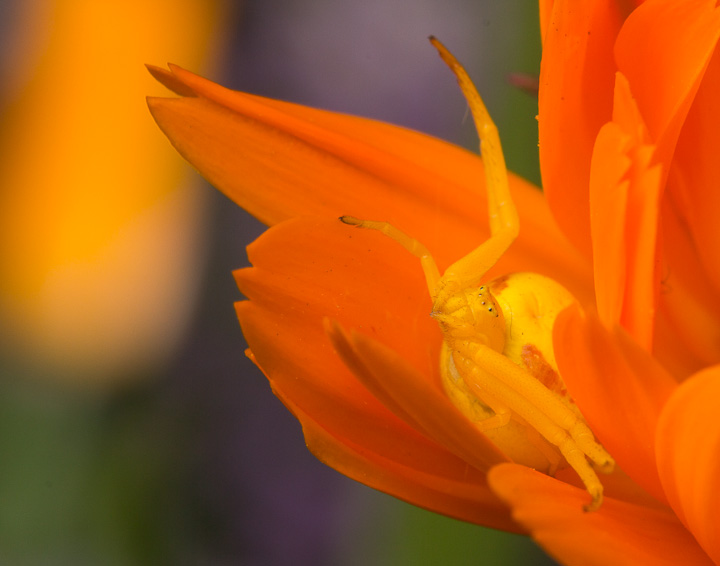
This weekend I have been working on revisions on a paper, so have not had time for a full-fledged expedition, but I spent a couple hours outside the lab at school (Simon Fraser University) on Saturday and Sunday, and some time in the Community Garden at Pandora Park in the evenings. For the time invested, it was not a bad haul of shots!
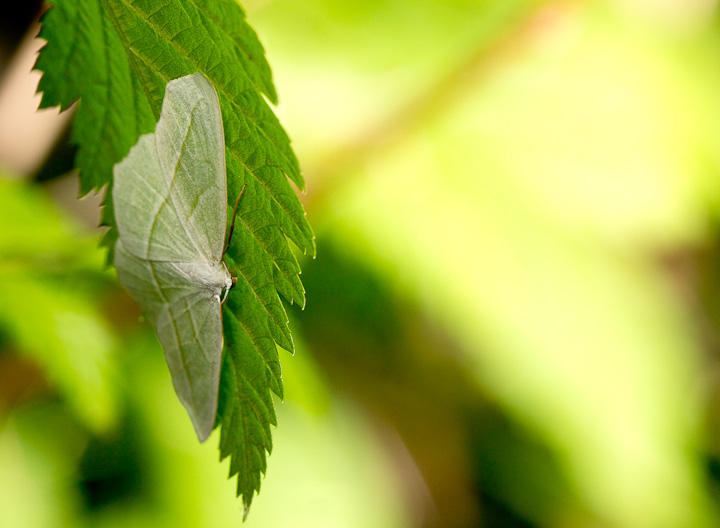
Dis you know that National Moth Week is upon us? This Pale Beauty did! Check back here Thursday for moth shots, as I am organizing a nighttime light trapping at school Wednesday night.

Mounting a second flash in a tree up the trail, I mimicked what a foraging bird might cue in on when examining sun-struck foliage.

Once he landed, this fly was very cooperative for photography! I didn’t notice his Nematoceran buddy til later though.

Here I am trying to make millipedes look good.
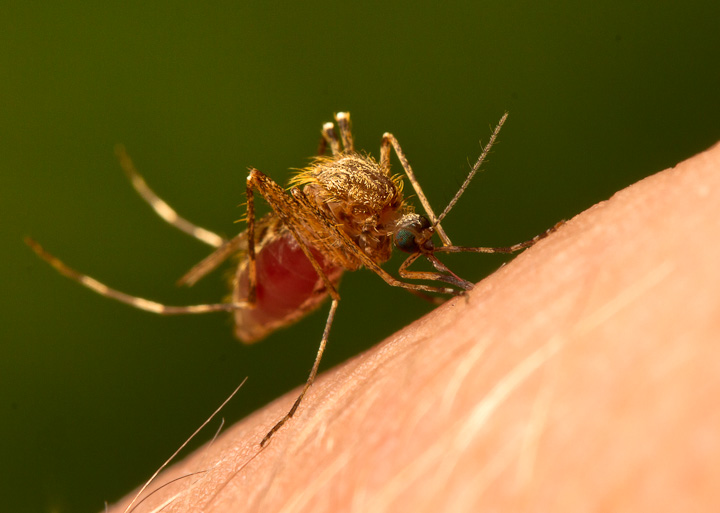
A Coquillettidia perturbans feeds on my arm. This species has larvae with a blade-like siphon that they pierce plant tissue with in order to breathe. They never have to come to the surface.

Found this firebrat (Thermobia domestica) in a basement hallway at SFU. They must have been on my mind, as my friend Nathan Woodbury just defended his PhD last week describing how these guys use symbiotic bacteria and fungi as site cues for resting spots.

A male Polistes dominula found at the community garden. I should revise my post about in situ on white, because I find when I push the whites using levels in Photoshop, I get a cleaner result than in ACR…

Polistes dominula and thrips. What a size difference!
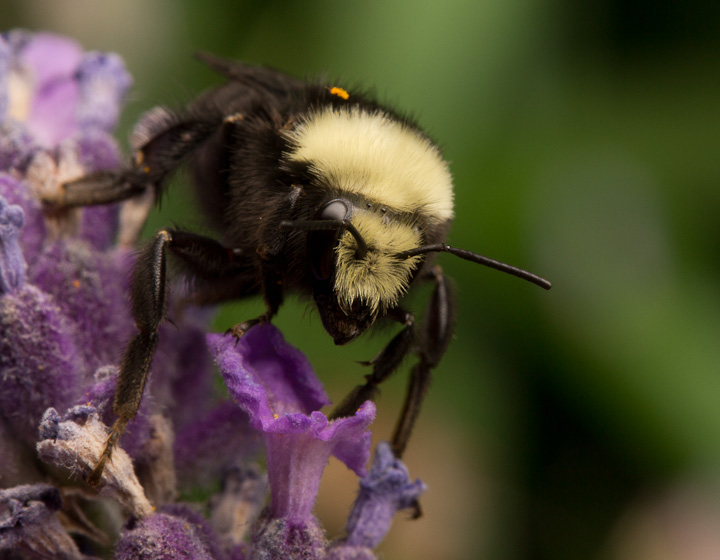
Bombus vosnesenskii on lavender. They really are an elegant bee.



I put the Polistes on an Echinacea. I think he liked it.
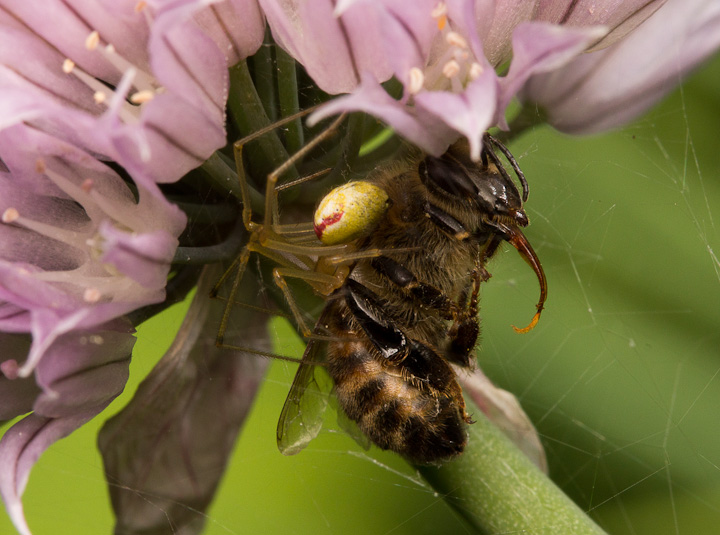
At the SFU comminity gardens, a honeybee learns the perils of pollination.
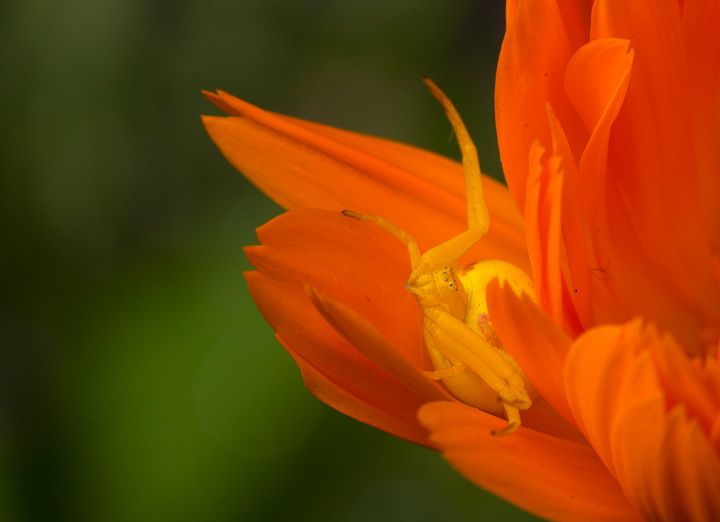
This is one of the major perils, and so pretty! The Goldenrod Crab Spider lies in wait, and seems to blend in with its surroundings.

A Snipe Fly (Rhagionidae likely in the genus Rhagio) in the clutches of death.

Will this hoverfly learn? No one can say. This pullback shot was possible thanks to the Monster Macro Rig; see the next picture for details.

This is a configuration you can use for pullback shots using the Monster Macro Rig. Notice that the camera body is pulled way back on the Arca rail, and the magic arms are somewhat extended forward. It can go even further than that, but mostly I use it close in. Photo by Mike Hrabar, who captured a wicked shot of the Crab Spider and Snipe Fly encounter.

Speaking of hoverflies, what I love about this shot is how the vortices from the landing fly kick up the pollen.

Honeybee, looking elegant on Echinacea.

The Weekend Expedition ended with this lovely Brown Lacewing on a daisy neat the Pandora Park Community Garden.
Wonderful photographs. Great rig! Are you shooting manual flash, TTL and what is ratio between the flashes? Just curious, I am using an RC1 and a speed light on a macro arm, much the same as your rig. Right now I am trying to get the light more diffused.
Yep, the flashes are manual-only. They are 2 different lights, one a Yongnuo 560 and the other a YN-468. I generally have the smaller light facing the background, usually at 1/4 power, and the larger light in the diffuser lighting the subject, 1/8 to 1/4 power, but they both vary. For diffusion, you could try this: http://ibycter.com/2013/03/05/cheapskate-tuesday-7-cheapskate-flash-diffuser-mark-ii/